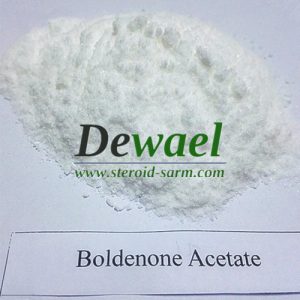CAS 94-24-6 Pharmaceutical Raw Materials Local Anesthetic Drugs Powder Tetracaine
- Fabricant: Dewael
- Essai de produit: 99%+
- Apparence:poudre cristalline blanche.
- Lieu d'origine: Chine
- certificat: SGS,ISO9001, GMP
- Quantité minimum d'achat: 10g
- Détails de l'' emballage: des moyens discrets d'emballage pour la douane passer garanti
- Heure de livraison: Dans 12 heures après réception de votre paiement
- Modalités de paiement: Western union, MoneyGram,Bitcoin,Virement
- livraison: EMS,DHL,Fedex,UPS,TNT et ainsi de suite.
- Politique: Re-Politique de livraison
- Capacité d'approvisionnement: 500-600kg/mois
CAS 94-24-6 Pharmaceutical Raw Materials Local Anesthetic Drugs Powder Tetracaine
Tetracaine Basic Details
| Nom du produit | Tétracaïne |
| Alias | Anetain, Amethocaine, Pontocaine,Ametop,Dicaine |
| CAS | 94-24-6 |
| MF | C15H24N2O2 |
| MW | 264.36 |
| EINECS | 202-316-6 |
| Pureté | 99.00% |
| Qualité | qualité pharmaceutique |
| Apparence | Poudre cristalline blanche. |
| marque NMAE | HKYC |
| la norme | USP38 |
| Durée de conservation | 2 années |
| Stradge | Keep in a ventilated, dry and cool place |
| Stock | Mass Stock |
| Méthodes d'emballage | conçus moyens d'emballage déguisées, 100% passer garantie personnalisée |
| Heure de livraison | dans 18 heures après le paiement confirmé |
| Paiement | T / T, Western union,Money Gram , Bitcoin |
| Usage | Tetracaine is a prescription medication used to prevent pain and induce anesthesia. |
La description:
Tétracaïne, also known as amethocaine, is a local anesthetic used to numb the eyes, nose, or throat. Tetracaine may also be used before starting an intravenous to decrease pain from the procedure. Typically it is applied as a liquid to the area. Onset of effects when used in the eyes is within 30 seconds and last for less than 15 minutes.
Tetracaine was patented in 1930 and came into medical use in 1941. It is on the World Health Organization’s List of Essential Medicines, the most effective and safe medicines needed in a health system. The wholesale cost in the developing world is about 1.34 à 1.63 USD per 10 ml bottle. In the United Kingdom the eye drops cost the NHS about 0.49 pounds per dose.
Tetracaine Application
(1) In biomedical research, tetracaine is used to alter the function of calcium release channels (ryanodine receptors) that control the release of calcium from intracellular stores. Tetracaine is an allosteric blocker of channel function. At low concentrations, tetracaine causes an initial inhibition of spontaneous calcium release events, while at high concentrations, tetracaine blocks release completely.
(2) Tetracaine is the T in Tac, a mixture of 5 à 12 per cent tetracaine, 5M(per myriad), a half per mille (0.5‰), or .05 per cent (1 part in 2000) , et 4 or 10 per cent hydrochloride used in ear, nose & throat surgery and in the emergemcy department where numbing of the surface is needed rapidly, especially when children have been injured in the eye, ear, or other sensitive locations.
(3) Tetracaine is synthesized from 4-butylaminobenzoic acid. The ethyl ester is formed through an acid-catalyzed esterification reaction. Base-catalyzed transesterification is achieved by boiling the ethyl ester of 4-butylaminobenzoic acid with excess 2-dimethylaminoethanol in the presence of a small amount of sodium ethoxide.
Tetracaine Dosage:
Tetracaine is given as an injection through a needle placed into an area of your middle or lower back near your spine. You will receive this injection in a hospital setting.
Your breathing, blood pressure, oxygen levels, and other vital signs will be watched closely while you are receiving tetracaine injection.
Spinal numbing medicines can have long-lasting effects on certain body processes such as sexual function, bowel or bladder control, and movement or feeling in your legs or feet. Talk with your doctor about these effects.
Since this medicine is given by a healthcare professional in a medical setting, an overdose is unlikely to occur.
Since tetracaine is given as needed before a surgery or other medical procedure, you are not likely to be on a dosing schedule.
Test Report(coa):
| Articles | la norme | Résultats |
| La description | White or light yellow, waxy solid | Conforme |
| Identification | UN. Dissolve 100 mg in 10 mL of dilut hydrochloric acid(1 in 120), and add 1 mL of potassium thiocyanate Solution (1 in 4): A crystalline precipitate is formed. Recrystallize the precipitate from water, and dry at 80 for 2 heures: It melts between 130 et 132. |
Conforme |
| B: Par UV, Pour correspondre à la norme de travail | Conforme | |
| Conforme | ||
| Pureté chromatographique | Conform to standard | Conforme |
| Perte au séchage | ≤0,5% | 0.09% |
| Résidu au feu | ≤0,1% | 0.03% |
| Plage de fusion | 41ºC~46ºC | 42.3ºC~43.6ºC |
| Solvants résiduels | Ethanol≤0.5% Acetone≤0.5% Dichloromethane≤0.06% Toluene≤0.089% Isopropyl ether≤0.5% |
Not detected Not detected Not detected Not detected 0.009% |
| Essai(*) | 99.0%~101,0% | 100.52% |
| Conclusion | The Sample Complies With Specification of USP38 | |
———————————————————————————————————————————————————————————————————————————————————————-
Contacter maintenant
































Avis
Il n'y a pas encore de critiques.